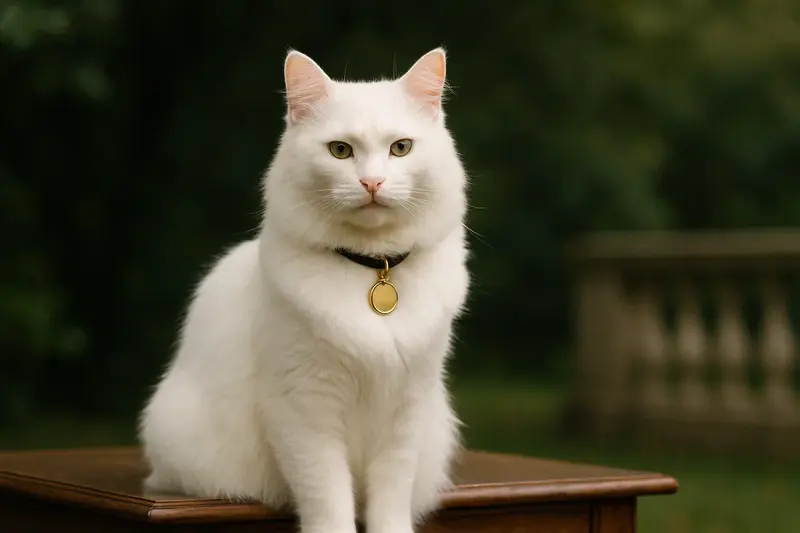The White Russian cat, also known as the Russian White, is a rare feline breed derived from the Russian Blue bloodline. It inherits the poise, intelligence, and tranquil nature of the Russian Blue while donning a stunning all-white coat. In this article, we explore the White Russian cat from a zoological, behavioral, and care-focused perspective, covering everything from its origins to ideal ownership.

The White Russian is not a naturally occurring breed but a color variant selectively bred from the Russian Blue. The breed originated in Australia in the 1970s through the controlled introduction of the white gene.
Breeders aimed to retain the refined physique and gentle temperament of the Russian Blue while adding a visually striking white coat.
Some international cat registries, such as the Australian Cat Federation (ACF) and the World Cat Federation (WCF), recognize the White Russian as a legitimate color variant within the Russian breed group.
Short, dense, close-lying fur with a silky sheen
Completely pure white with no markings or color variations
Vivid green, almond-shaped eyes
Calm and dignified expression with deep, introspective gaze
Medium-sized, elegant and muscular frame
Long, slender legs and balanced proportions
Large, upright ears and a slightly wedge-shaped head
This breed tends to be reserved and quiet, rarely vocalizing or demanding attention.
White Russians often bond closely with one or two individuals in the household, offering silent companionship.
Highly adaptable and observant, they enjoy gentle exploration but are never aggressive or hyperactive.
Feed high-quality, protein-rich cat food
Avoid ingredients that may trigger allergies, as white cats may have more sensitive skin
Brush once or twice weekly to maintain coat shine and remove loose hairs
Wipe with a damp cloth to keep the white fur stain-free
Prefers calm, secure, and tidy indoor spaces
Enjoys having elevated perches and hideaway spots to feel safe and relaxed
Thanks to controlled and responsible breeding, the White Russian is generally healthy with a good lifespan.
A small percentage may be prone to congenital deafness (common in white cats but rare in this breed)
Sensitivity to bright light due to lack of pigmentation in eyes and skin
Routine vaccinations and annual check-ups are essential
Periodic hearing and vision screenings are advised for white cats
Perfect for seniors, singles, or families who appreciate a serene, undemanding companion
With their easy-going temperament and simple grooming needs, White Russians are ideal for beginners
If you're drawn to minimalist beauty and elegance, this breed offers visual charm and emotional tranquility
The White Russian cat may not be flashy or flamboyant, but its understated elegance and steady temperament make it a treasured companion. With its intelligent gaze, gentle mannerisms, and timeless beauty, the White Russian is a living embodiment of feline grace—a guardian in white that enriches life with calm devotion and quiet loyalty.
animal tags: White Russian Cat
We created this article in conjunction with AI technology, then made sure it was fact-checked and edited by a Animals Top editor.